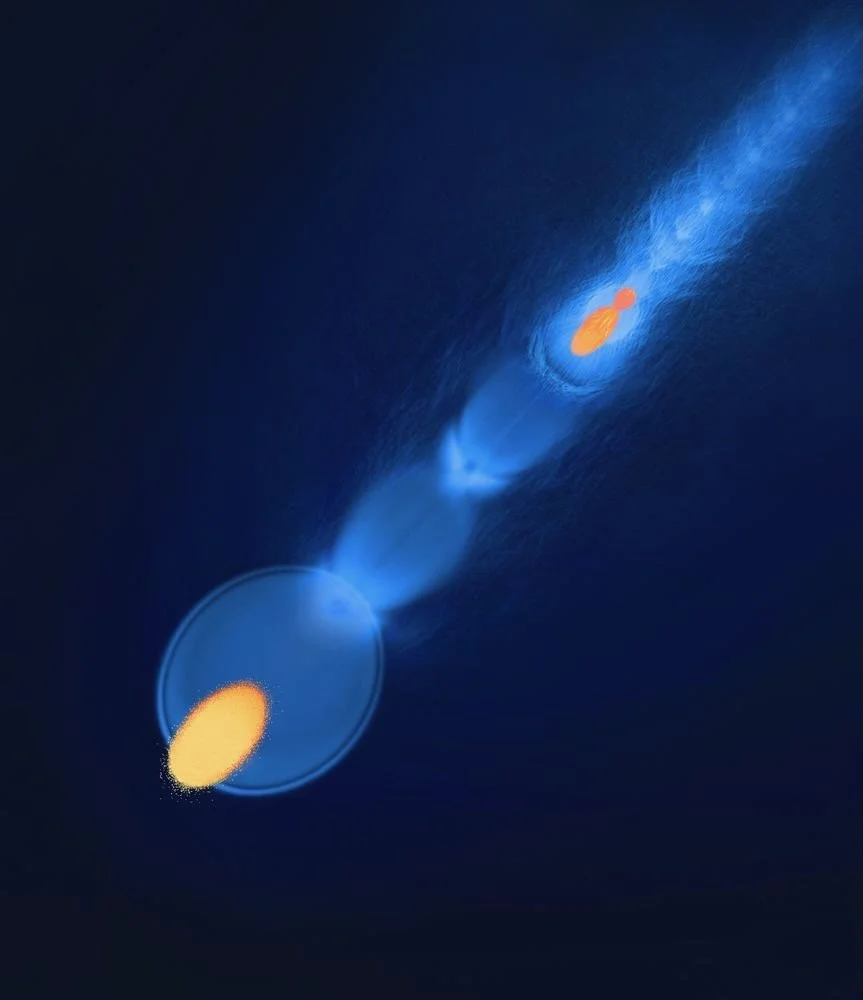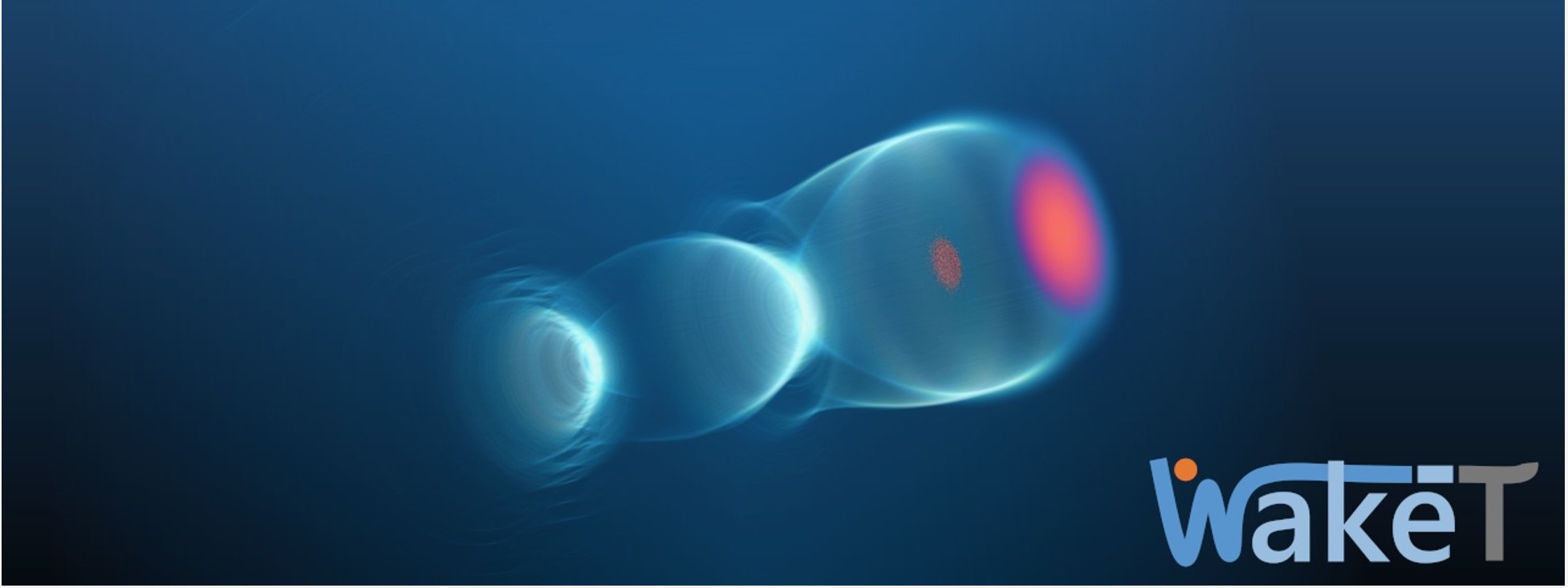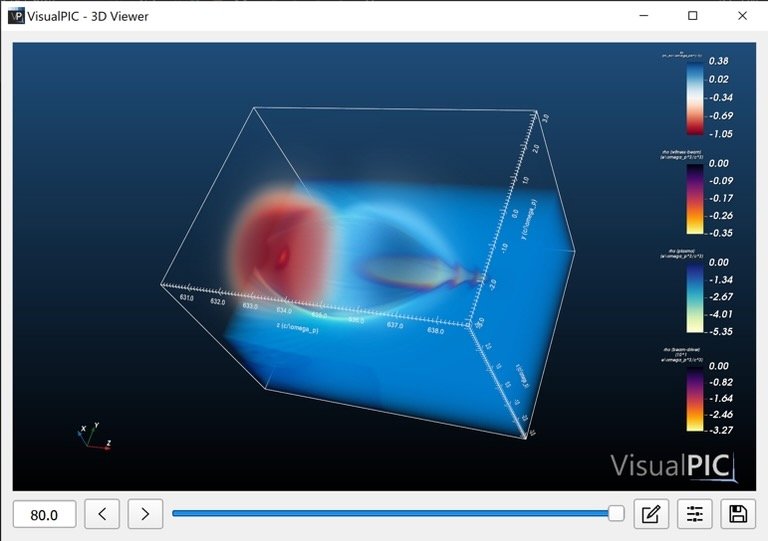



Simulation Tools
Simulation Tools
At DESY, we develop a selection of tools to simulate the multi-scale multi-physics processes at play for plasma acceleration. Our codes range from reduced models running in seconds on a laptop to high-performance computing codes harnessing the world’s largest supercomputers equipped with Graphics Processing Units. We support a collaborative and open-source environment, and adopt successful community standards to simplify multi-code start-to-end pipelines. See below for a list of our closest collaborators.

HiPACE++
HiPACE++ is our flagship open-source C++ code for 3D simulations of beam-driven and laser-driven wakefield acceleration in the quasistatic approximation, typically valid for plasma accelerator stages with external injection. Its mesh-refinement capability allows for quick simulations at high resolution on GPU-equipped supercomputers.
HiPACE++ started in 2020 as a DESY-LBNL collaboration. Contact: Maxence Thévenet (DESY), Severin Diederichs (CERN), Axel Huebl (LBNL)
FBPIC
FBPIC is an open source particle-in-cell code for fast and reliable simulations of laser plasma acceleration. FBPIC employs a spectral, quasi-cylindrical algorithm and supports parallel computing on GPUs. The code is written in Python, offers a user-friendly interface and seamlessly integrates with state or the art analysis and optimization tools.
FBPIC started in 2015 as a LBNL-DESY collaboration and is now widely adopted by the community. Contact: Remi Lehe (LBNL), Manuel Kirchen (DESY)
LASY
LASY (LAser manipulations made eaSY) is an open-source Python library that facilitates the initialization of complex laser pulses in simulations of laser-plasma interactions. It offers various ways to define complex laser pulses (e.g., analytical, experimental) as well as pre-processing functionalities like propagation and geometry conversion. The laser field is then exported in a file at the openPMD standard making also LASY an adapter to combine codes together in a start-to-end approach (FBPIC+Wake-T, WarpX+HiPACE++).
LASY is a community effort started in 2022 between DESY, LBNL, LOA and CEA to pool existing scripts into a durable library; contact: Remi Lehe (LBNL), Maxence Thévenet (DESY)
Wake-T
Wake-T, the Wakefield particle Tracker, is a lightweight open-source Python package combining the cylindrical geometry and quasistatic approximation for quick (and accurate!) simulations on a laptop. Supporting beam-driven and laser-driven scenarios, Wake-T can be efficiently combined with full-particle-in-cell codes like FBPIC for fast full-physics simulations, and driven by Optimas for large-scale Bayesian optimization.
Wake-T has been developed at DESY from 2018 on and is being picked up by more institutes. Contact: Ángel Ferran Pousa (DESY)
Optimas
Optimas is an open-source Python library designed for highly scalable optimization, from laptops to massively-parallel supercomputers. Its key features are: 1) Scalability, from your laptop to high-performance computing clusters; 2) User-Friendliness, specify number of evaluations and computing resources and Optimas handles the rest. 3) Unwasteful, it integrates algorithms from Ax for single- and multi-objective Bayesian optimization.
Optimas stemmed as an LBNL-ANL-DESY collaboration in 2019. Contact: Remi Lehe (LBNL), Stephen Hudson (ANL), Alberto Martinez de la Ossa (DESY)
VisualPIC
VisualPIC is an open-source 3D visualization tool for Particle-In-Cell simulations. It provides a simple and lightweight graphical interface to harness the capabilities of VTK, enabling high-quality 3D rendering in an easy way. It supports scientific data at the openPMD standard, as well as custom format from popular codes such as OSIRIS.
VisualPIC was developed at DESY for analysis and rendering of PIC simulation output. It currently has no active maintainer, any contribution is welcome. Contact: Alberto Martinez de la Ossa (DESY)
COMSOL Plasma Module (HYQUP)
From a gas profile in a cell, a jet or a capillary, understanding how the plasma is created and evolves over slow time scales (nanoseconds to microseconds) has become increasingly important for the competitiveness of plasma accelerators. Understanding this process has ramifications on the quality of the injected beams, the energy attainable and the repetition rate. Simulations of such processes are enabled by our hydrodynamic plasma plugin HYQUP in the proprietary code COMSOL-Multiphysics.
HYQUP started in 2020 at DESY and quickly became a collaboration with James Cook University. Contact: Mathis Mewes (DESY), Maxence Thévenet (DESY)




























